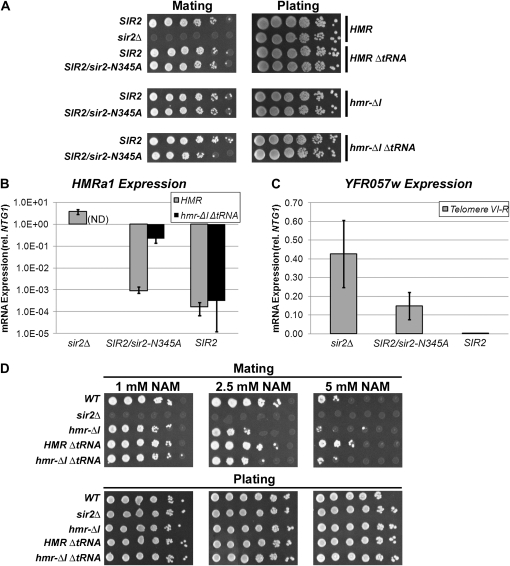Figure 7.—
Both the HMR-I silencer and the tRNAThr gene are required to maintain complete silencing of HMRa1 when deacetylation is reduced. (A) Mating ability was assessed by exposing 10-fold serial dilutions of MATα haploids to MATa tester haploids (LRY1021). The resulting diploids were selected on minimal medium. The same strains described in Figure 6 were used, as well as a MATα sir2Δ strain (LRY1068). (B) Levels of HMRa1 in a strain containing wild-type HMR and sir2Δ (LRY1068), and strains containing either wild-type HMR or hmr-ΔI ΔtRNAThr in the presence of both Sir2p and Sir2-N345Ap (LRY0804 and LRY2352) or only Sir2p (LRY1007 and LRY2309). HMRa1 levels were not assayed in a strain containing hmr-ΔI ΔtRNAThr and sir2Δ (ND). RNA was isolated from the indicated strains and the mRNA transcripts were converted to cDNA and quantified by real-time PCR using primers specific for the HMRa1. Transcript levels are shown relative to the control gene (NTG1). Values represent the average of four independent RNA preparations and are plotted on a logarithmic scale. (C) Relative levels of YFR057w mRNAs were quantified in strains with sir2Δ (LRY1068), SIR2 and sir2-N345A (LRY0804), and wild-type SIR2 (LRY1007). Data from four independent RNA isolations are plotted as in B. (D) Mating ability was assayed upon exposure to the given concentrations of nicotinamide (NAM) in the same strains as in A.

